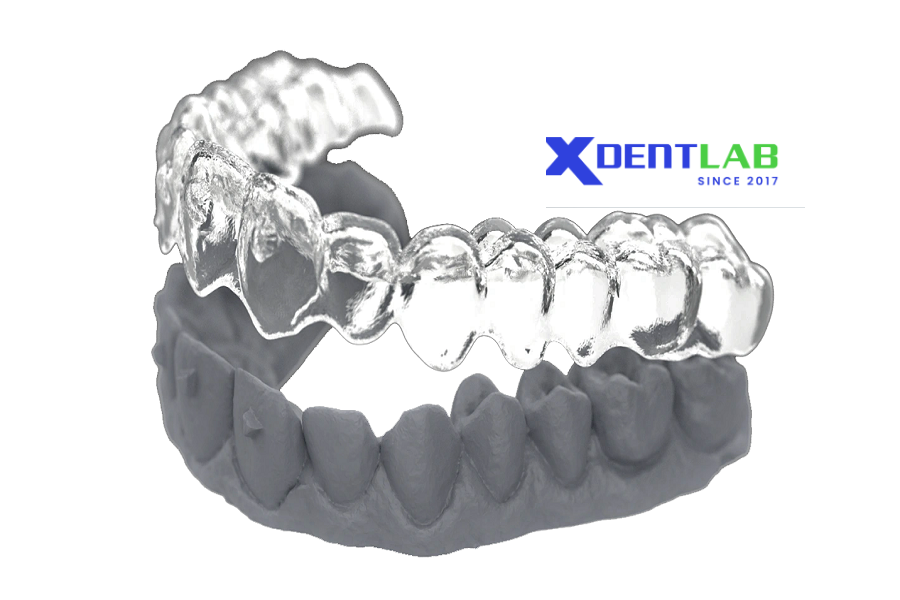
Introduce Clear Aligner Export Services xdentlab.com are orthodontic devices designed to straighten teeth through a series of custom-made, transparent plastic trays. Unlike traditional braces, which consist of metal brackets and wires, clear aligners fit snugly over the teeth and are virtually invisible. This aesthetic appeal has contributed to their rising popularity, especially among adults and teenagers who prefer a more discreet option for correcting dental misalignments.
Understanding Clear Aligners and Their Benefits
Introduce Clear Aligner Export Services One of the primary benefits of using clear aligners is their comfort. The smooth plastic material minimizes irritation to the gums and cheeks, a common complaint associated with metal braces. Additionally, clear aligners are removable, allowing users to maintain better oral hygiene. Users can easily take them out while eating and during oral care routines, which reduces the risk of plaque buildup and cavities.
Effectiveness is another significant advantage of clear aligners. They can treat a range of orthodontic issues, including crowded teeth, gaps, and even more complex cases with the help of advanced 3D imaging technology. Each aligner in the series is specifically crafted to gradually shift the teeth into the desired position, with treatment durations often comparable to traditional braces.
Moreover, the customization process for clear aligners incorporates state-of-the-art technology that ensures precision fitting and efficient treatment plans. Patients undergo 3D scans, allowing orthodontists to create a tailored series of aligners that cater specifically to their dental structure. This innovative approach not only enhances treatment outcomes but also accelerates the overall process of teeth straightening.
The growing popularity of clear aligners among various demographics can be attributed to these factors, making them an attractive option in modern orthodontics. With continual advancements in aligner technology, one can expect further improvements in efficacy and patient satisfaction in the future.
The Process of Clear Aligner Export Services
The process of clear aligner export services begins with an initial consultation between the patient and a qualified dental professional. During this consultation, Vietnam dental laboratory expert evaluates the patient’s orthodontic needs and discusses the suitability of clear aligners as a treatment option. This step is pivotal, as it establishes a foundation for the customized aligners that will ultimately be created.
Subsequent to the consultation, the next step involves obtaining a precise digital impression of the patient’s teeth through a scanning or 3D imaging process. This modern technology enables the capture of detailed dental data, ensuring the successful fabrication of the aligners. Accurate imaging is critical, as it directly influences the aligner’s design and effectiveness in shifting teeth into their desired positions.
Once the imaging is complete, the data is sent to a laboratory specializing in clear aligner fabrication. This laboratory processes the digital impressions and utilizes advanced computer-aided design (CAD) software to create the aligners. These custom aligners are then produced using high-quality materials that meet both durability and aesthetic standards.
After the aligners have been manufactured, logistics play a crucial role in their export. It is essential that the export process complies with international standards and regulations to ensure the safe and efficient delivery of the product. Various parameters, including customs regulations and shipping protocols, must be meticulously managed to prevent delays or complications.
Vietnam dental laboratories remains vital throughout this entire process. They not only oversee the treatment planning and monitor the alignment progress but also facilitate communication between the patient and the laboratory. Their expertise is instrumental in ensuring that patients receive high-quality care and achieve successful outcomes with clear aligners.
Challenges and Future of Clear Aligner Export Services
The clear aligner export services sector is currently facing several challenges that could shape its trajectory moving forward. One of the most significant hurdles is regulatory compliance. As clear aligners are considered medical devices, they must adhere to varying regulations across different countries. This can create complexities for companies attempting to navigate multiple regulatory landscapes. Ensuring that products meet these stringent requirements demands substantial resources, expertise, and time, thereby impacting operational efficiency.
Additionally, the industry is witnessing intense competition. Numerous brands and new market entrants are vying for attention, which compels existing companies to continuously innovate to maintain market share. The proliferation of digital solutions in orthodontics has further intensified this competition, as patients increasingly expect seamless and accessible treatment options. For clear aligner manufacturers, staying ahead in this competitive landscape requires a commitment to research and development, fostering unique selling propositions that differentiate their products from those of others.
Technological advancements also play a vital role in the future of clear aligner export services. Innovations such as artificial intelligence for treatment planning and 3D printing technology significantly enhance productivity and precision in aligner production. These advances streamline processes, lower costs, and improve the patient experience, positioning companies to better serve the global market. Moreover, the rising trend toward telehealth in orthodontics offers opportunities for clear aligner providers to extend their services beyond geographical barriers.
Must-see articles : Custom orthodontic clear aligners
Furthermore, global trends such as remote work and increased health awareness influence consumer behaviors towards orthodontic treatments. As individuals seek convenient yet effective solutions, the demand for clear aligners is projected to grow. Embracing these changes, dental practices can leverage export services to enhance patient care and streamline treatment plans, thereby fostering a more responsive environment for both practitioners and patients alike.